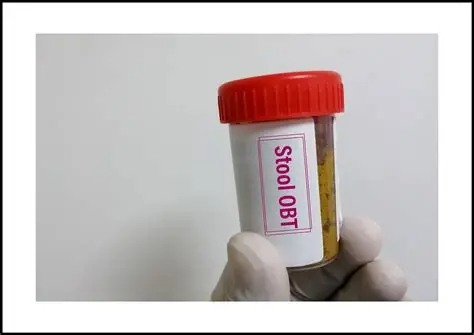Introduction
Stool (also called feces) is more than just waste material—it holds valuable information about a person’s health. It can help detect infections, parasites, digestive disorders, blood, and even cancer. But to get accurate results, how the stool sample is collected, handled, and transported is just as important as the testing itself.
Imagine a situation where a doctor suspects a patient has a bacterial or parasitic infection. They request a stool test. If the sample isn’t collected properly, or it’s delayed and reaches the lab in poor condition, the diagnosis could be wrong. This is why proper collection and transportation of stool specimens are crucial for reliable lab results.
This article explains the process in detail—from preparation to packaging—in a simple, clear, and humanized way.
Table of Contents
What is a Stool Specimen?
A stool specimen is a sample of feces collected for laboratory analysis. It helps detect:

- Bacterial infections (e.g., Salmonella, Shigella)
- Parasitic infestations (e.g., Giardia, Entamoeba)
- Viral infections (e.g., Rotavirus)
- Blood (hidden or visible)
- Digestive enzyme deficiencies
- Signs of inflammation (e.g., fecal calprotectin)
Why is Proper Collection Important?
A stool sample may contain:
- Bacteria
- Parasites
- Undigested food
- Mucus
- Blood
- Cells from the intestine
If the sample is contaminated or not preserved properly:
- The microbes may die before reaching the lab
- Overgrowth of unrelated bacteria may happen
- Test results become unreliable
- It may lead to misdiagnosis
General Guidelines Before Collection
Before collecting the sample, the healthcare worker or lab technician should inform the patient about:
Do’s:
- Use a clean, dry container (not the toilet bowl)
- Label the container with name, date, and time
- Wash hands before and after collection
- Deliver the sample as soon as possible
Don’ts:
- Don’t collect during menstruation (if testing for occult blood)
- Don’t mix with urine or water
- Don’t refrigerate unless advised
- Don’t delay if testing for parasites or viruses
Preparation for the Patient
For adults:
- Use a clean bedpan, commode, or newspaper/plastic wrap to catch the stool
- Do not use toilet water—it can destroy organisms
For infants:
- Line the diaper with plastic wrap to prevent urine contamination
- Collect the stool from the surface using a clean spatula
Types of Containers Used
| Container Type | Use |
|---|---|
| Wide-mouthed sterile container | Routine stool culture, ova and parasite (O&P) exam |
| Screw-cap vials with preservatives | Used when delay in transport is expected |
| Transport media (e.g., Cary-Blair) | Preserves bacteria during transit |
| Special containers (e.g., buffered glycerol saline) | For viral detection |
| Containers with formalin/PVA | For parasites (preserve cysts, ova, trophozoites) |
Step-by-Step: How to Collect a Stool Sample

1. Gather Supplies:
- Sterile container with tight lid
- Wooden spatula or scoop (often included)
- Gloves (optional but recommended)
- Soap and water or hand sanitizer
2. Collecting the Sample:
- Pass stool into a clean, dry container (bedpan or over plastic wrap)
- Do not mix with urine or toilet water
- Using the scoop, collect walnut-sized amount (5–10 g) or enough to fill 1/3 of the container
- For watery stool, about 5 mL is enough
3. Seal and Label:
- Tightly close the lid
- Label the container with:
- Patient’s name
- Date and time of collection
- Doctor’s name (if required)
- Type of test (if known)
4. Clean Up:
- Wash hands thoroughly with soap and water
- Dispose of any remaining stool hygienically
- Disinfect collection surfaces (if needed)
When Should the Sample Be Sent to the Lab?
- Immediately, if possible.
- For bacteria and parasites, delays >1–2 hours can destroy organisms.
- If delay is unavoidable:
- Use appropriate transport medium
- Refrigerate at 2–8°C, unless testing for ova and parasites (which can be damaged by cold)
Transport Media and Preservatives
| Medium/Preservative | Used For | Function |
|---|---|---|
| Cary-Blair Medium | Bacteria | Maintains bacterial viability |
| Buffered Glycerol Saline | Viruses (e.g., Rotavirus) | Prevents viral breakdown |
| 10% Formalin | Ova and Parasites | Preserves cysts and eggs |
| PVA (Polyvinyl Alcohol) | Parasites | Preserves trophozoites |
| Refrigeration | Short-term storage | Slows bacterial growth |
Special Instructions for Specific Tests
1. Stool Culture:
- Collect before starting antibiotics
- Use sterile container without preservatives
- Transport within 2 hours
2. Ova and Parasite (O&P) Exam:
- Collect on three different days
- Do not refrigerate
- Use formalin or PVA if transport is delayed
3. Occult Blood (Guaiac Test):

- Avoid red meat, aspirin, and Vitamin C before testing
- Collect from different parts of the stool
- Use special card or test strip
4. Clostridioides difficile (C. diff):
- Collect diarrheal stool (not formed stool)
- Send in sterile container
- Transport immediately or refrigerate
5. Fecal Calprotectin:
- For inflammatory bowel disease (IBD)
- Use specialized containers provided by lab
- Store at cold temperature
Common Mistakes to Avoid
| Mistake | Consequence |
|---|---|
| Mixing stool with urine or water | Destroys sample integrity |
| Using dirty containers | Contaminates sample |
| Delaying transport | Organisms may die or overgrow |
| Collecting too small amount | Test cannot be performed |
| Freezing when not advised | Damages parasite structures |
Transportation to the Laboratory
Best Practices:
- Place sample in leak-proof secondary packaging
- Use biohazard label if required
- Keep at recommended temperature (room temp, chilled, or preserved)
- Deliver within 2 hours if no preservative used
- Use ice packs if refrigeration is required
Temperature Guidelines:
| Test | Temperature |
|---|---|
| Stool culture | Room temp or refrigerate |
| O&P test | Room temp |
| Viral tests | Cold (2–8°C) |
| Occult blood | Room temp |
| Clostridium difficile | Cold (2–8°C) |
In the Lab: What Happens Next?
Once the sample arrives at the lab:
- It is checked for proper labeling and condition.
- Logged into the lab system.
- Sent for:
- Microscopy (look under a microscope)
- Culture (grow organisms)
- Molecular testing (PCR for viruses or C. diff)
- Chemical analysis (pH, reducing sugars)
- Immunoassays (detect specific antigens)
Why All This Care Is Necessary
A stool sample contains living organisms that can:
- Die quickly if left unrefrigerated
- Multiply and outgrow others if too warm
- Lose their shape if frozen improperly
- Lead to false-negative or false-positive results
The more careful the collection and transport, the more accurate the diagnosis.
Real-Life Example: The Case of Misdiagnosed Diarrhea
A child presents with frequent diarrhea. A stool sample is collected but delayed in transport. By the time it reaches the lab, the parasites are no longer detectable. The report comes back “negative,” and treatment is delayed.
This kind of situation shows why proper collection and quick transport are critical—a simple mistake can lead to serious consequences.
Summary Table: Stool Sample Collection Essentials
| Step | What to Do |
|---|---|
| Before Collection | Educate the patient; prepare clean container |
| During Collection | Avoid urine/water; collect sufficient amount |
| After Collection | Seal, label, wash hands |
| Transport | Use appropriate media; deliver quickly |
| Storage (if needed) | Follow test-specific temperature guidelines |
Conclusion
Stool specimens are incredibly useful in diagnosing a wide range of conditions, from infections to digestive diseases. But to be effective, the process of collecting and transporting the sample must be done properly.
Whether you’re a healthcare worker, lab technician, or patient, understanding and following the correct procedures ensures that the stool sample tells the full story of what’s going on inside the body.
Good science starts with good samples, and stool is no exception. With the right steps and a little care, even a tiny sample of feces can save lives.
FREQUENTLY ASKED QUESTIONS
Why is collecting a stool specimen important?
Stool samples help diagnose:
Bacterial infections (e.g., Salmonella, Shigella)
Parasitic infestations (e.g., Giardia, Entamoeba)
Viral infections (e.g., Rotavirus)
Digestive disorders
Occult (hidden) blood
Inflammatory bowel diseases (IBD)
How much stool is needed for a test?
A walnut-sized amount (5–10 grams) is usually enough.
For watery stool, around 5 mL is sufficient.
How soon should the sample be taken to the lab?
Within 2 hours of collection is best.
If delay is expected, store the sample as instructed:
Refrigerate for bacterial culture or antigen tests.
Do not refrigerate for ova and parasite tests unless advised.
Related Articles




